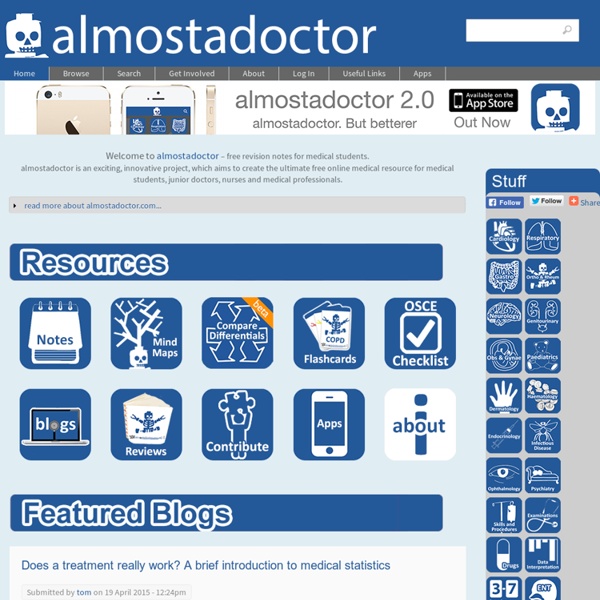



MedRevise:: free medical revision notes! Feather Does Finals, Barts & the London School of Medicine & Dentistry All files and images contained may be used for personal use only. You may not copy, reproduce, edit, adapt, alter, republish, post, broadcast, transmit, make available to the public, or otherwise use these files in any way except for your own personal, non-commercial use. You may not alter, transform, or build upon this work. You may not download, or use these image files for the purpose of promoting, advertising, endorsing or implying a connection with you (or any third party) and Queen Mary, University of London its agents or employees. [Home] Please read the Disclaimer below and indicate your acceptance before viewing the revision lectures. The information on the Feather Does Finals website has been provided for the user's convenience without any representation or warranty of accuracy or completeness when posted. We have made every effort to ensure that the information published on this website is accurate and up-to-date.
Medical Revision | SBA and OSCE | Dr Crunch Memorable Medicine - free online medical training and revision Prescribing Skills The Modules If this is your first visit here, please read the information below first. Otherwise, click on an icon below to open the appropriate module. You can either download it as a PowerPoint file, or open it as a pdf file, which is more convenient for printing, or as a 'rich text format' document which can be opened in word processing applications such as Microsoft Word. Key: = PowerPoint presentations (open in a new window, some large file sizes, requires PowerPoint to view) = Printable .pdf versions (open in a new window, get the free reader here) = Rich Text Format (open in a new window, can be opened in eg. = Web page version (opens in a new window) Information Contents About this resource This week we will mainly be doing prescribing .. This website gives you access to five presentations about prescribing skills, and one about building a CV. The modules contained on this website are designed to guide your learning through basic prescribing skills. ^ top of page How to use the website
Podmedics - Home Medical Revision for Finals Revision: medical finals, medicine revision, surgery, long case, short case, final year, students, examination, doctor, finals, clinical ,OSCE, lecture, preparation, preparing Geeky Medics | a free medical revision site for medics, by medics.....